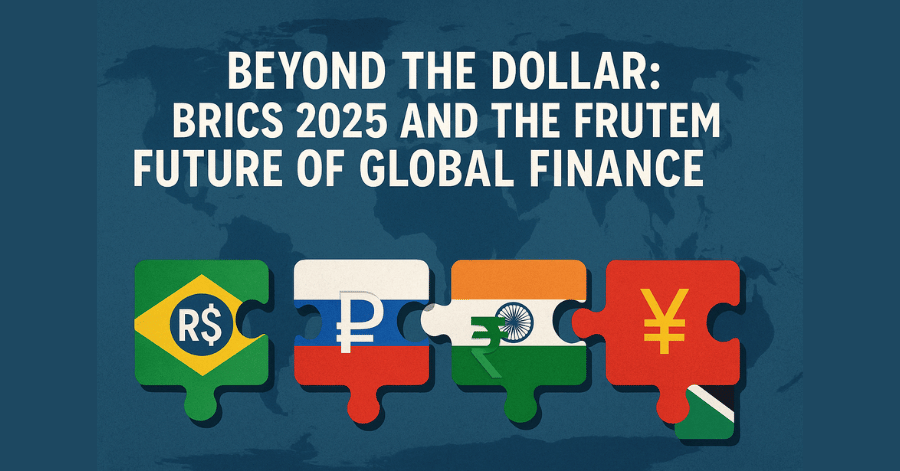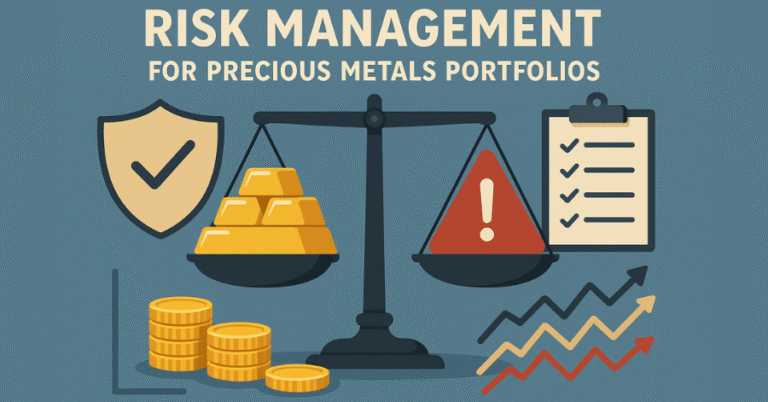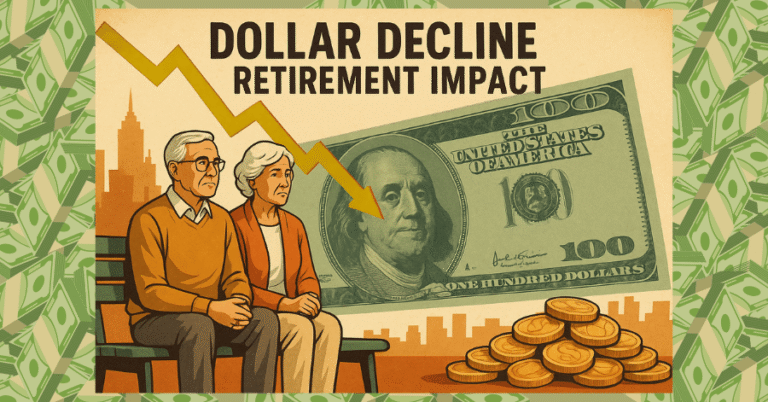Key Takeaways:
- A Slow Fade, Not a Sudden Collapse: While the U.S. dollar still dominates 74% of global trade, the article shows BRICS making measurable progress in local currency settlements, signaling a gradual shift rather than an overnight apocalypse for the dollar.
- The Dollar’s Self-Inflicted Wounds: The de-dollarization trend is being accelerated by the dollar’s own vulnerabilities, including the weaponization of sanctions and a soaring U.S. national debt that hit $34.5 trillion in 2024.
- BRICS’ Internal Divisions are the Biggest Hurdle: The dream of a single BRICS currency is severely hampered by internal roadblocks, most notably the economic and military rivalry between China and India, and a total lack of consensus on a currency’s design.
- The Future is a Fragmented Financial System: The most likely outcome isn’t a dollar replacement but a more “chaotic,” multipolar world with parallel systems, including commodity-backed trading (like the “Petroyuan”) and a growing network of Central Bank Digital Currencies (CBDCs).
- How Investors Can Adapt to a Multipolar World: The key strategy is not to abandon the dollar but to hedge against its fading dominance by diversifying portfolios with assets like Asia-focused ETFs, commodity and mining stocks, and digital payment technology.
Affiliate Disclosure: To support our mission of providing valuable financial analysis, this page may contain affiliate links. If you follow a link and make a purchase, we may earn a commission at no additional cost to you. We only recommend partners we thoroughly research and trust.
Read Our Article: Rio Reset Dollar Shakedown
 Is Gold Your Retirement Shield?
Is Gold Your Retirement Shield?
The BRICS Blueprint: More Than Just Talk
Multi-Currency Trade Framework
BRICS members are slowly ditching the dollar for local currencies in trade. For example:
- Russia-India Trade: In 2023, 65% of their $50 billion bilateral trade used rupees and rubles, up from 10% in 2022 (Russian Central Bank, 2024).
- China-Brazil: Yuan-real settlements hit $62 billion in 2023, covering 30% of their trade (People’s Bank of China, Q1 2024 Report).
But the Dollar Still Rules: Globally, 74% of trade invoices are in dollars (SWIFT, 2023 Year-End Data). BRICS local currencies account for 4.7% of global trade—up from 3.2% in 2020 (IMF Currency Composition of Trade, 2023).
New Development Bank (NDB):
- Lending Portfolio: The NDB funded 96 projects worth $33 billion since 2015, with 60% targeting renewable energy (NDB 2023 Annual Report).
- Governance Woes: India and South Africa stalled 3 infrastructure votes in 2023 over China’s dominance (Reuters, citing anonymous NDB officials).
- Funding Gap: The NDB’s 50billioncapitalpalesagainsttheIMF’s50billioncapitalpalesagainsttheIMF’s1 trillion (IMF Financial Statements, 2023).
Digital Innovation:
- Digital Yuan: Processed $250 billion in 2023, but just 0.2% of China’s GDP (PBOC Digital Currency Report, 2024).
- BRICS Blockchain: The BIS-led mBridge pilot moved 22millionin2023—tinyvs.SWIFT’s22millionin2023—tinyvs.SWIFT’s5 trillion daily (BIS Quarterly Review, March 2024).
Gold’s Role:
- BRICS added 2,800 tons of gold to reserves since 2015 (World Gold Council, 2023).
- Problem: Gold prices swung 17% in 2023 (1,800–1,800–2,100/ounce), making it a shaky anchor (London Bullion Market Association, 2023).
The Dollar’s Weak Spots
Sanctions Backlash:
- Russia’s Pivot: Post-2022 sanctions, Russia slashed dollar reserves from 21% to 5%, boosting yuan (30%) and gold (25%) (Russian Finance Ministry, 2024).
- China’s Move: Cut U.S. Treasury holdings by $500 billion since 2021 (U.S. Treasury Dept, January 2024).
Debt Bomb:
- U.S. debt hit $34.5 trillion in 2024, with interest payments eating 12% of the federal budget (Congressional Budget Office, April 2024).
Regional Alliances:
- ASEAN: Launched a Local Currency Settlement Framework in 2023—Indonesia, Malaysia, and Thailand now trade in rupiah, ringgit, and baht (ASEAN Secretariat, 2023).
- GCC: Saudi Arabia and UAE are testing a blockchain-based digital currency for oil trades (UAE Central Bank, 2023 White Paper).
BRICS’ Big Problems
China vs. India:
- Trade Imbalance: India’s $100 billion trade deficit with China makes it wary of yuan reliance (Indian Ministry of Commerce, 2023).
- Military Tensions: 2023 border clashes froze joint BRICS projects for months (Stimson Center Analysis, 2024).
Tech Hurdles for a BRICS Currency:
- Eurozone Lessons: The euro took 40+ years to launch. BRICS lacks a shared bond market or fiscal rules (BIS Working Papers, 2023).
- Who’s in Charge? Russia wants a gold-backed currency; India prefers a digital rupee. No consensus exists (BRICS 2023 Summit Minutes).
Parallel Systems Rising
Commodity Blocs:
- Petroyuan: 12% of China’s oil imports (6.7 million barrels/day) settled in yuan, up from 3% in 2020 (IEA Oil Market Report, Q1 2024).
- Russia’s Ruble Gas Deals: 58% of Russian gas exports to “unfriendly” nations are in rubles (Gazprom Annual Report, 2023).
CBDC Race:
- 130 countries are testing CBDCs. BRICS leads:
- Digital Yuan: 260 million users in China (PBOC, 2024).
- Digital Rupee: India targets 1 million daily users by 2025 (Reserve Bank of India Roadmap, 2023).
What Should Investors Do?
- Diversify: Hedge funds boosted Asia-focused bets by 18% in 2023 (Goldman Sachs Asset Management Report, 2024).
- Commodities: Copper and lithium prices jumped 22% in 2024 as BRICS infrastructure booms (Bloomberg Commodity Index, April 2024).
- Tech Plays: Blockchain firms like Ripple and Circle partner with BRICS banks for cross-border payments (Company Disclosures, 2023).
Frequently Asked Questions: BRICS and De-Dollarization
What does BRICS stand for and which countries are members?
BRICS originally stood for Brazil, Russia, India, China, and South Africa. As of 2024, the alliance has expanded to include Egypt, Ethiopia, Iran, Saudi Arabia, and the United Arab Emirates, making it BRICS+. Argentina was invited but declined to join under its current government.
How long has BRICS been trying to replace the US dollar?
The formal de-dollarization efforts began around 2009 following the global financial crisis, but gained serious momentum after 2014 when Russia faced Western sanctions over Crimea. The push accelerated dramatically after 2022 sanctions following Russia’s invasion of Ukraine.
How does de-dollarization actually work in practice?
De-dollarization involves countries agreeing to trade in their local currencies instead of dollars. For example, when India buys oil from Russia, instead of converting rupees to dollars and then dollars to rubles, they directly exchange rupees for rubles. This requires establishing currency swap agreements, exchange rate mechanisms, and banking infrastructure between countries.
Will this affect my mortgage rates and everyday expenses?
If the dollar weakens significantly, it could lead to higher inflation in the US as imports become more expensive. This might push the Federal Reserve to raise interest rates, potentially affecting mortgage rates. However, the process described in the article is gradual, so dramatic overnight changes are unlikely.
What happened when other reserve currencies lost dominance historically?
The British pound was the dominant reserve currency until after World War II. Its decline took about 30 years (1920s-1950s) and coincided with Britain’s reduced economic and military power. The transition involved periods of currency instability and multiple competing systems before the dollar emerged as the clear winner.
How would a regular American be affected if the dollar loses reserve status?
Americans might face higher prices for imported goods (electronics, clothing, food), more expensive international travel, and potentially lower purchasing power globally. However, the US would still benefit from having the world’s largest economy and most developed financial markets.
Are there other alternatives to the dollar besides BRICS currencies?
Yes, the euro remains the second-largest reserve currency at about 20% of global reserves. The Japanese yen and British pound also serve as alternatives. Additionally, some economists discuss a potential return to gold standards or the development of supranational digital currencies managed by international organizations.
What are the biggest risks if I keep all my money in US dollars?
The main risks include currency devaluation if dollar demand drops, inflation if import prices rise, and missed opportunities as other economies potentially outgrow the US. However, the dollar still offers liquidity and stability that most other currencies can’t match.
Could this lead to a new Cold War-style economic split?
Many experts believe we’re already seeing the emergence of competing economic blocs – a dollar-based Western system versus alternative systems led by China and Russia. This could result in parallel trade networks, separate payment systems, and reduced economic integration between blocs.
How realistic is a single BRICS currency, really?
Most economists consider it highly unlikely in the next 10-15 years due to the massive political and economic coordination required. The eurozone took over 40 years to develop, and BRICS countries have much greater economic disparities and political tensions than European nations did.
What should small investors do differently from large institutions?
Unlike institutions that can easily access foreign markets and currencies, small investors should focus on diversified index funds that include international exposure, consider commodity-backed investments, and maintain emergency funds in stable assets. Avoid trying to time currency movements or making dramatic portfolio shifts based on headlines.
Conclusion: No Dollar Apocalypse—Just Chaos
The dollar isn’t dying, but its dominance is fading. By 2030, expect:
- Dollar’s Reserve Share to drop from 59% to 50% (IMF Long-Term Forecast, 2023).
- BRICS GDP to overtake the G7 by 2035 (Goldman Sachs Research, 2023).
- CBDCs to handle 20% of cross-border payments (Atlantic Council, 2023 Geoeconomics Report).
Key Forecasts:
- “The dollar will remain dominant, but multipolarity is inevitable.” — World Bank Global Economic Prospects, 2024.
- “BRICS’ real impact? Fragmenting finance, not replacing the dollar.” — Peterson Institute for International Economics, 2023.







